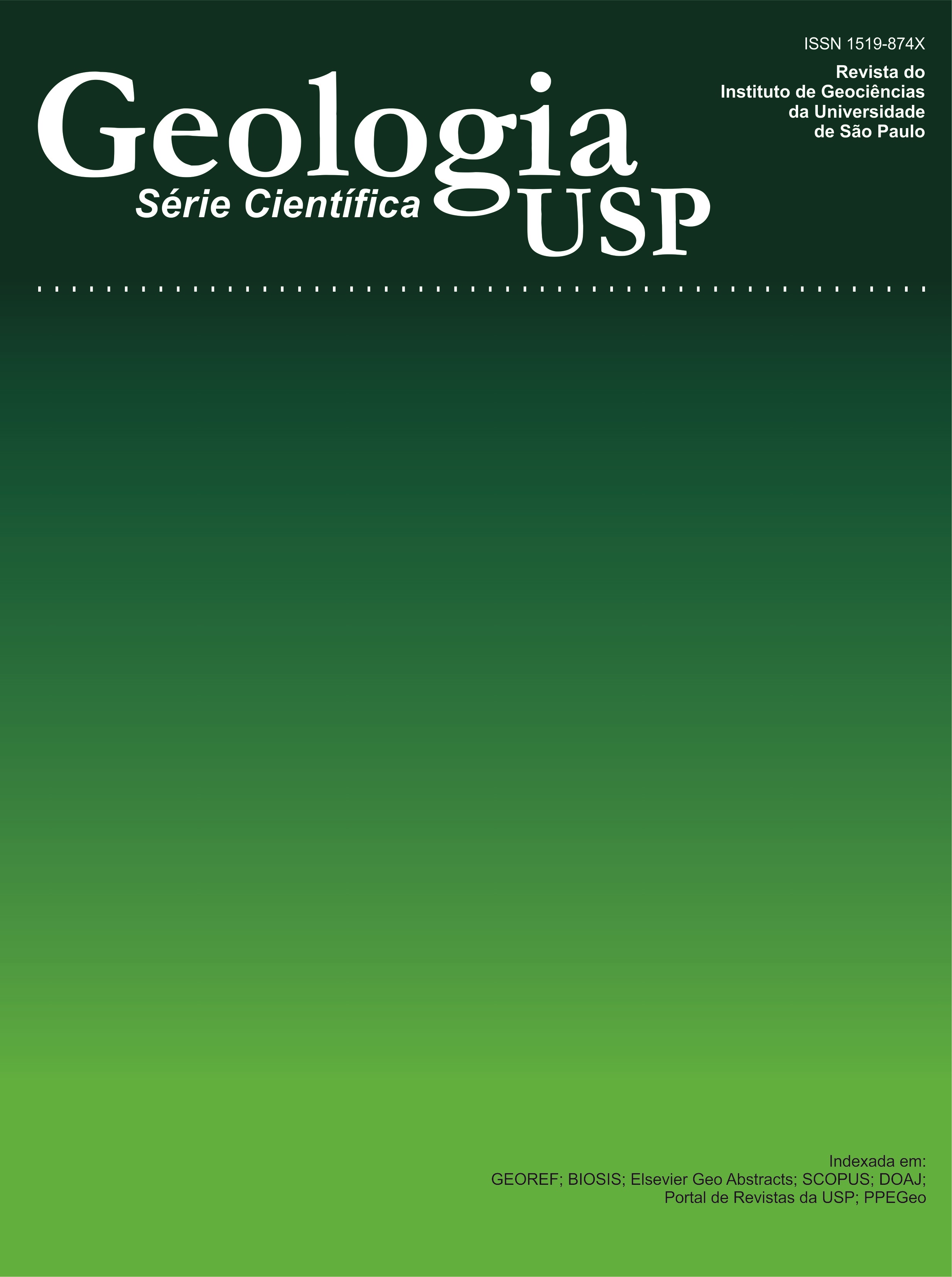U-Pb and Sm-Nd data of the Rhyacian and Statherian Orthogneisses from Rio Piranhas-Seridó and Jaguaribeano Terranes, Borborema Province, Northeast of Brazil
DOI:
https://doi.org/10.5327/Z1519-874X201400030007Abstract
The Portalegre shear zone separates the Rio Piranhas-Seridó and the Jaguaribeano geological terranes in the Northern Domain of the Borborema Province. Banded gneisses of the Caicó and the Jaguaretama Complexes represent the basements of these terranes. U-Pb analyses yielded ages of 2,193 ± 16 Ma for the Jaguaretama Complex, which is similar to those obtained for the Caicó Complex. T DM Sm-Nd ages for these basement complexes showed Neoarchean values (ca. 2.5 Ga), with εNd(t) values close to the CHUR composition. Elongated bodies were found intruding into the rocks of the Jaguaretama Complex. These foliated bodies with elongated phenocrysts are described as augen gneisses of the Serra do Deserto Suite. These gneisses yielded crystallization ages of 1,777 ± 8 Ma, confirming an extensional period during the Statherian, which is well represented in the Jaguaribeano Terrane by A-type plutonic rocks. Augen gneisses with similar textures, the so called Poço da Cruz Suite, are found intruding the Caicó Complex in the Rio Piranhas-Seridó terrane; however, the ages found throughout the domain are predominantly Rhyacian (ca. 2.2 Ga) and present calc-alkaline affinities. These findings indicate that the augen gneisses, which are widely distributed in these two terranes, have different signatures and are temporally well separated. Furthermore, in agreement with previous geophysical data suggesting a division of terranes marked by the Portalegre Shear Zone, it also demonstrates that even though the Caicó and the Jaguaretama Complexes have similar ages, similar structural evolution and metamorphism under similar pressure and temperature conditions, they exhibit marked differences in composition.Downloads
Download data is not yet available.
Downloads
Published
2014-09-01
Issue
Section
Articles
License
Authors who publish in this journal shall comply with the following terms:
- Authors keep their copyright and grant to Geologia USP: Série Científica the right of first publication, with the paper under the Creative Commons BY-NC-SA license (summary of the license: https://creativecommons.org/licenses/by-nc-sa/4.0 | full text of the license: https://creativecommons.org/licenses/by-nc-sa/4.0/legalcode) that allows the non-commercial sharing of the paper and granting the proper copyrights of the first publication in this journal.
- Authors are authorized to take additional contracts separately, for non-exclusive distribution of the version of the paper published in this journal (publish in institutional repository or as a book chapter), granting the proper copyrights of first publication in this journal.
- Authors are allowed and encouraged to publish and distribute their paper online (in institutional repositories or their personal page) at any point before or during the editorial process, since this can generate productive changes as well as increase the impact and citation of the published paper (See The effect of Open Access and downloads on citation impact).
How to Cite
Sá, J. M., Sousa, L. C. de, Legrand, J. M., Galindo, A. C., Maia, H. N., & Fillippi, R. R. (2014). U-Pb and Sm-Nd data of the Rhyacian and Statherian Orthogneisses from Rio Piranhas-Seridó and Jaguaribeano Terranes, Borborema Province, Northeast of Brazil . Geologia USP. Série Científica, 14(3), 97-110. https://doi.org/10.5327/Z1519-874X201400030007





